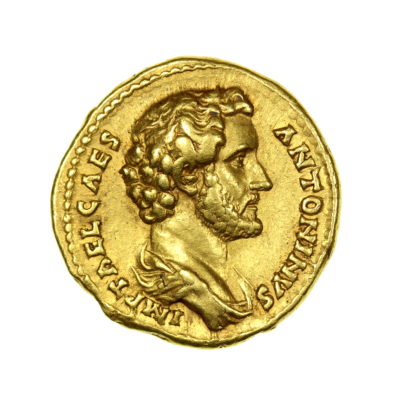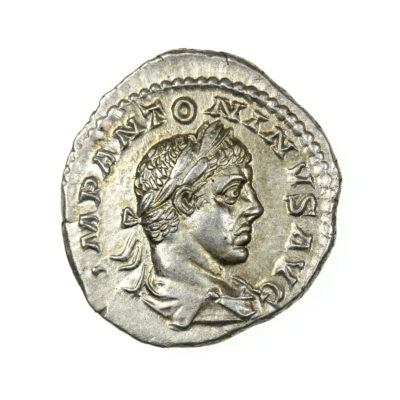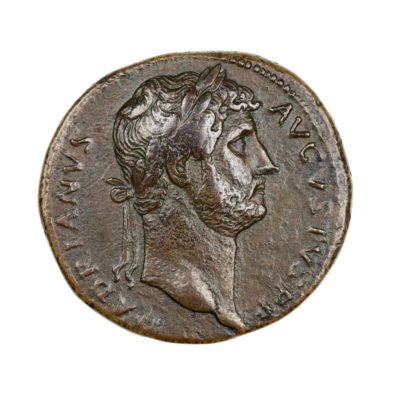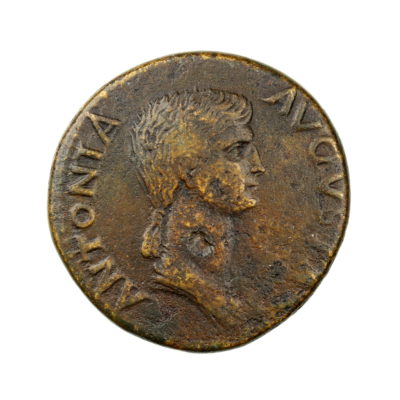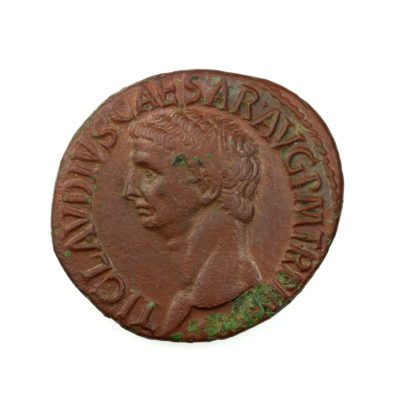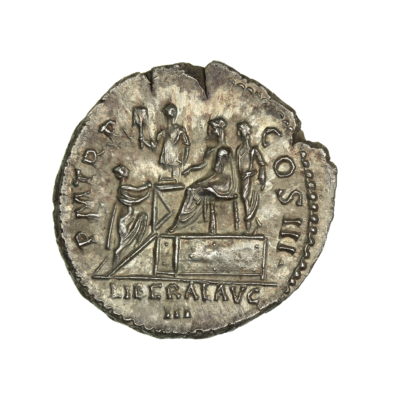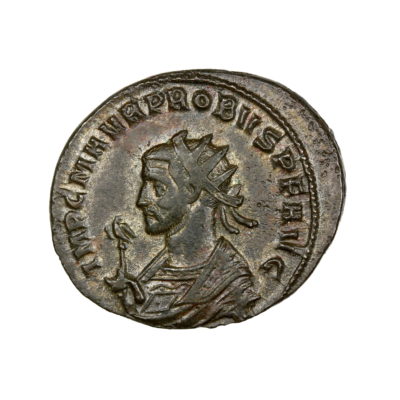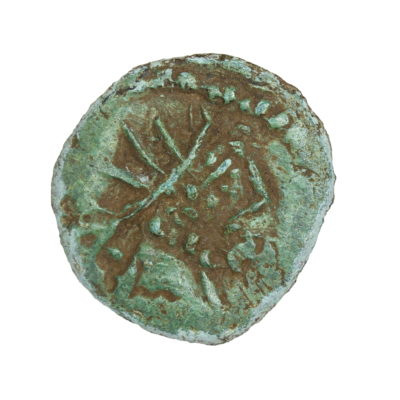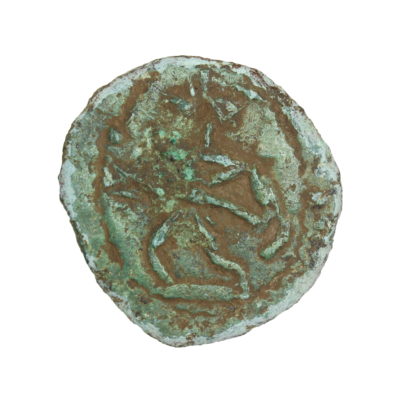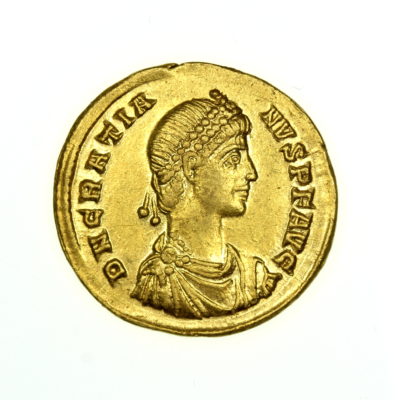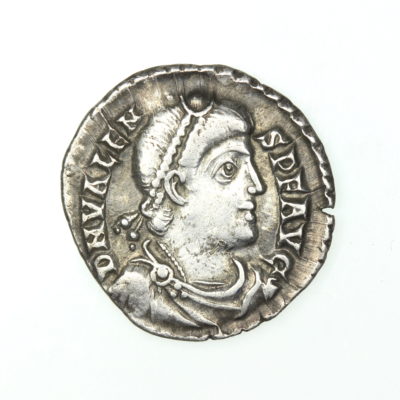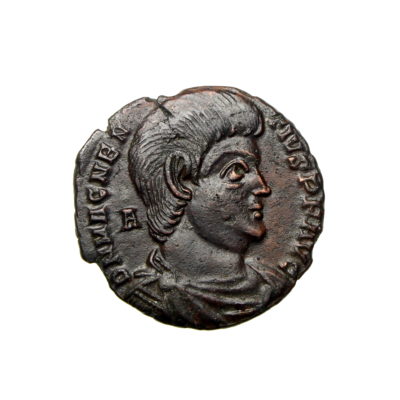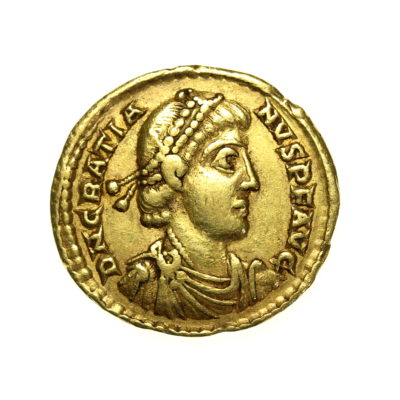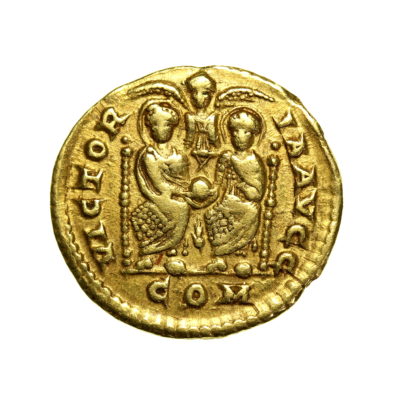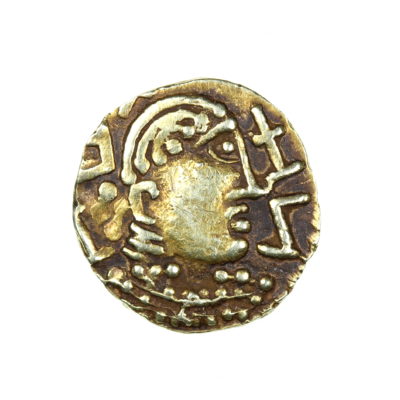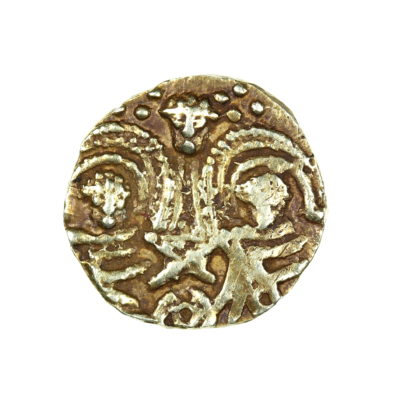An Introduction to Roman Coinage
by Hugh Smith

Although the systematic conquest of Britain by the Romans did not take place until 43 AD under the Emperor Claudius there had been increasing contact and trade between the two cultures since the expeditions carried out by Julius Caesar nearly 100 years earlier. This led to a certain Romanization of local Celtic coinage prior to the invasion of 43AD as can be seen in this Classic type gold stater of the British king Cunobelinus (AD 8-41). Rather than the crude, triple tailed horses of before, here you see a well styled, very lifelike depiction.
The introduction of Britain into the Roman Empire initiated a complete change of the currency which endured for the next 350 years. The main denominations of coinage, which could be used throughout the Roman Empire, initially were:

